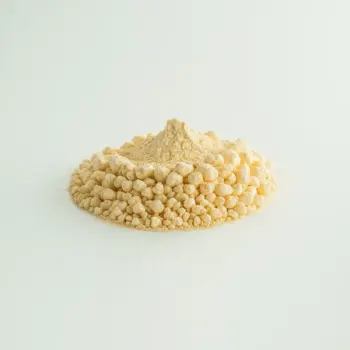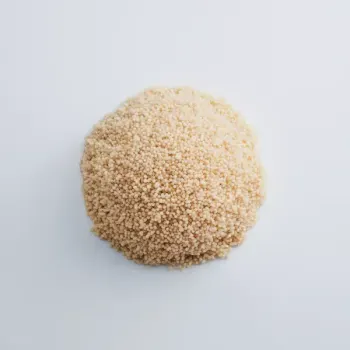Cornstarch and Tapioca Starch are thickening agents used in cooking for sauces, soups, and gluten-free baking, with differences in texture and flavor. Cornstarch offers a silky texture, while Tapioca Starch adds chewiness and a slight sweetness.

Cornstarch is a fine, powdery starch that's derived from the endosperm of corn. It's a popular thickening agent often used in soups, sauces, and gravies.

Tapioca Starch, also known as tapioca flour, is extracted from the roots of the cassava plant. It's commonly used to thicken pies, puddings, and soups, and is a favorite for gluten-free baking.
Cornstarch and Tapioca Starch differ in texture, taste, and origin. Cornstarch is flavorless and imparts a slick texture, while Tapioca Starch has a slightly sweet taste and gives a chewy texture. Cornstarch is derived from corn, whereas Tapioca Starch comes from the cassava root.

Your ultimate Recipe Box, Meal Planner, and Cooking Class all in one
Best for fruit pies, providing a clear, glossy filling. It's perfect for high-acid fruits like cherries and rhubarb. Cornstarch can thicken quickly under high temperatures. Ideal for berry pies and fillings that require a translucent, glossy appearance. Tapioca Starch creates a more evenly textured filling and prevents the formation of a gelatinous mass after cooling.
Excellent for velvety soups and sauces. It provides a smooth texture and is an ideal thickener for dairy-based sauces due to its ability to prevent separation. Works well in soups and sauces that need a slightly glossy sheen. It's particularly good in dishes that are meant to be frozen and reheated, as it maintains consistency.
Commonly used in combination with other gluten-free flours to improve texture and provide structure in cakes and pastries. Adds elasticity to gluten-free dough and is crucial for achieving a chewy texture in bread and pizza bases.
Cornstarch and Tapioca Starch are both gluten-free and provide similar calorie content per serving.
| Nutrient | Cornstarch ( per 100g ) | Tapioca Starch ( per 100g ) |
|---|---|---|
| Fat | 0.1g | 0.02g |
| Fiber | 0.9g | 0.9g |
| Sodium | 9mg | 2mg |
| Protein | 0.3g | 0.2g |
| Calories | 381 | 360 |
| Carbohydrates | 91.3g | 88.7g |
Not always. While they can replace each other in many recipes, the difference in texture and sheen can affect the final product, particularly in baked goods and desserts.
Yes, Tapioca Starch tends to have a stronger thickening power, so you may need less of it compared to Cornstarch.
They can be, but they will produce different textures. Cornstarch gives a gel-like consistency, while Tapioca Starch results in a more 'stringy' and chewy texture.
Tapioca Starch is more stable when frozen and thawed, making it a better choice for dishes you plan to freeze.
Cornstarch is relatively flavorless, while Tapioca Starch can have a slight sweetness.